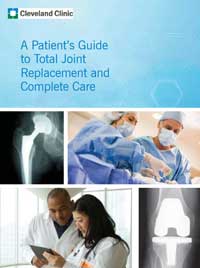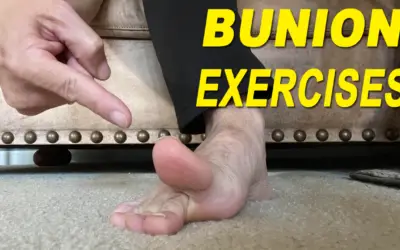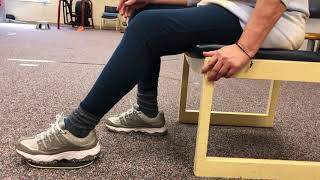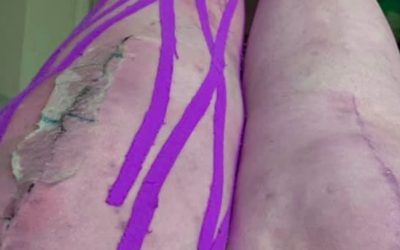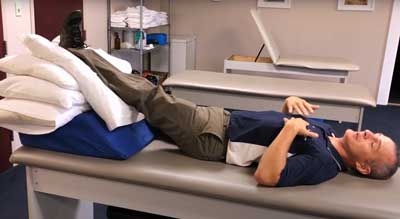Preparing for a Knee Replacement the EASY Way
The best way to prepare for a total knee replacement surgery is to follow these three steps:
Step 1 – Take a pre-operative knee replacement class.
Step 2 – Schedule a pre-operative physical therapy evaluation.
Step 3 – Create a battle plan for your recovery.
Step 1 – Take a pre-operative knee replacement class.
Cleveland Clinic’s A Patient’s Guide To Total Joint Replacement and Complete Care is a great resource with comprehensive checklists from one of the leading joint replacement programs in the country.
A total knee replacement class will teach you everything you need to do before surgery, the day of surgery, and after surgery.
What if my surgeon doesn’t offer a class?
If your surgeon doesn’t offer a class then consider taking my class or find one online or in person.
Much of the material is the same regardless of surgeon or surgical procedure.
Step 2 – Schedule a pre-operative physical therapy evaluation.
Physical therapy is widely recommended after a joint replacement. Clients may also choose to start physical therapy before a joint replacement.
As a physical therapist myself, I can tell you that some of the most important parts of a pre-surgical physical therapy evaluation is the time spent answering questions, taking measurements, practicing with your walker, and preparing you for the best possible outcome.
What can I expect from a pre-surgical physical therapy evaluation?
Since your physical therapist has most likely worked with several hundred patients who have already had a hip or knee replacement you will be able to learn from all of that experience.
Your therapist has seen the good and the bad and will provide you with great advice for your before surgery.
Your therapist will also be able to help you fit your walker, cane, or crutches to your body and teach you how to use these devices with enough time for you to get some practice.
You will develop a pre-surgical strength and conditioning program that will not make your knee pain worse, but will help you improve the muscle health and improve your body’s ability to recover from surgery.
I recommend having a pre-operative physical therapy evaluation approximately 6-weeks prior to surgery. This will allow you enough time to learn everything you need and practice the exercises you have been shown.
Step 3 – Create A Battle Plan
Joint replacement surgery is major surgery. You should hope for the best while planning for the worst.
This means you want to start with a list of all the daily chores and responsibilities you perform in a day. Then decided who will be performing these activities while you are recovering.
In the best case scenario you should plan to be unavailable for 2 weeks, but this could be as long as 12 weeks depending on your body’s response to surgery.
Determine who will buy groceries, who will prepare meals, who will wash laundry, clean the bathrooms, take out the trash, feed the pets.
The less you have to worry about after surgery the better your recovery will go.

More Blog Posts …
When can I walk upstairs normally after TKR?
Article Updated: 09/02/2023Walking Upstairs Post-Op Throughout my extensive career as a physical therapist specializing in total knee replacements, I've observed a consistent pattern: the 10-week post-operative mark often serves as a significant milestone for...
Do Toe Spacers Help Bunions
Yes, toe spacers help bunions by mechanically realigning the great toe with the natural structure of the medial foot and arch. Toe spacers should initially be used for short periods of time, up to 20-minutes a day during the first week before increasing to several...
Heel Slides After Knee Surgery
"I would like to know when we can officially give up the darn heel slides and other stretch exercises, or do we need to continue forever?" Heel slides after knee surgery are just one of many exercises available to increase range of motion, reduce swelling, and regain...
Does RockTape Kinesiology Tape Help Recovery After Total Knee Replacement
Yes, kinesiology tape has been studied and may be effective for patients following total knee replacement surgery. Here is a quote from a recent study concluding: "KT technique appeared to be beneficial for reducing postoperative pain, edema, improving knee extension...
5 Best Wedge Pillows for Total Knee Replacement
What is a wedge pillow? A wedge pillow is literally what it sounds like, a pillow shaped like a wedge. Wedge pillows are commonly used for people who have sleep apnea or breathing issues at night. They are also used for any condition in which a person needs to keep...
Best walking shoes after knee replacement surgery in 2022
Best Shoes After Knee Replacement: What should I wear immediately after knee replacement surgery? What are the best shoes to wear at home? At Physical Therapy?
Scheduling A Massage After Knee Replacement Surgery
Massage therapy is an effective treatment in post-surgical care to reduce pain, improve swelling, and help return patients to daily activities. Several studies have investigated the benefits of massage therapy as soon as 2 days after total knee replacement surgery....
When Can I Drive After Total Knee Replacement Surgery?
You may typically resume driving 6 weeks after total knee replacement surgery. In the US, some surgeons will allow people who had their left knee replacement resume driving sooner. The most important factor to getting clearance to drive is your ability to walk...
Shin Pain After Knee Replacement
Shin pain after a knee replacement is often due to bone strain. The knee is experiencing new loading patterns and will take up to 12-months to remodel.
What causes sciatica after knee replacement?
Occasionally after a total knee replacement, my patients reports signs and symptoms consistent with sciatica. My patients describe a sharp, burning hot poker stabbing them in the buttock with searing pain that runs down the lateral back of the leg to the knee and...
